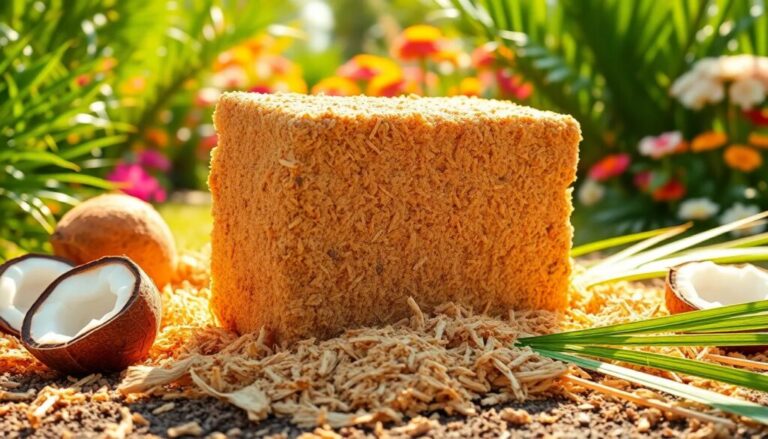Sunflower, Russian Mammoth cultivation guide
The Sunflower, Russian Mammoth (105 days) is an impressive variety that is popular among sunflower growers. With its monumental size and ease of cultivation, it is an attractive choice for both novice and expert gardeners. Throughout this article, we will explore the characteristics, cultivation, and care of this magnificent plant.
From planting to harvest, Sunflower, Russian Mammoth offers a rewarding and visually stunning experience. You will learn the best practices to ensure successful and healthy growth.
What are the characteristics of sunflower Russian Mammoth?
The Sunflower, Russian Mammoth is known for its impressive dimensions. These plants are capable of reaching heights of up to 16 feet, making them true giants in the garden. Some outstanding features include:
- Large flowers: The flower can measure up to 12 inches in diameter, providing a stunning visual spectacle.
- Nutritious seeds: Sunflowers are an excellent source of nutrients and healthy oils.
- Weather Hardiness: This variety is quite hardy and adapts well to different weather conditions.
In addition to its size, Sunflower, Russian Mammoth is also valued for its ability to attract pollinators, which benefits other plants in your garden. This variety is, without a doubt, an essential component to any sustainable garden.
How to successfully cultivate sunflower Russian Mammoth?
To successfully cultivate sunflower, Russian Mammoth, it is essential to follow some essential guidelines. First, select a site with full sun, as sunflowers thrive in direct sunlight. Here are some key tips:
- Soil Preparation: Use well-drained soil rich in organic matter to ensure healthy growth.
- Planting: Plant seeds 1 to 2 inches deep and make sure there is enough space between seeds.
- Adequate watering: Water regularly, but avoid waterlogging, as this can adversely affect the roots.
Choosing the right time to plant is also crucial. Ideally, seeds should be planted in spring, when the risk of frost has passed. This will allow the Sunflower, Russian Mammoth to grow properly before the arrival of the summer heat.
What is the optimal spacing for sunflower Russian Mammoth?
Adequate spacing between plants is key for optimal growth of Sunflower, Russian Mammoth. A spacing of at least 24 to 36 inches between each plant is recommended. This allows each sunflower sufficient access to light, nutrients and water. Some important considerations are:
- Avoiding competition: Adequate spacing minimizes competition for resources between plants.
- Improved air circulation: By providing space, the risk of fungal diseases is reduced.
- Ease of maintenance: Good spacing makes watering and pest monitoring easier.
If you want to grow Sunflower, Russian Mammoth in a more limited area, consider using large pots, although this may limit its overall height and size.
How tall do sunflower Russian Mammoth grow?
The height of the Sunflower, Russian Mammoth is one of its most impressive characteristics. These plants can reach heights of up to 16 feet, making them a spectacular choice for any garden. However, several factors can influence their growth:
- Soil quality: Nutritious, well-drained soil will promote taller, healthier growth.
- Climatic conditions: Warm temperatures and sun exposure are determining factors in the final height of the plant.
- Proper care: Regular application of organic fertilizers can stimulate further growth.
With proper care, you can expect your Sunflower, Russian Mammoth to be a sight to behold in your garden – don’t forget to plan space for these wonders to grow freely!
Where can you buy sunflower Russian Mammoth seeds?
There are multiple options for purchasing Sunflower, Russian Mammoth seeds. Some of the most recommended sources include:
- American Seed: This Pennsylvania-based company offers a wide variety of high-quality seeds, including sunflowers.
- Uncle Jim’s Worm Farm: In addition to vermicomposting supplies, they also carry sunflower seeds and other gardening products.
- Local nurseries: It’s always a good idea to visit nurseries in your area, where you can get local advice and see the products in person.
Before you make your purchase, be sure to research the seller’s reputation and the quality of their products. This will ensure that you get Sunflower, Russian Mammoth seeds that are viable and of good quality.
What care tips should you follow for sunflower Russian Mammoth?
Caring for your Sunflower, Russian Mammoth is essential to ensure its healthy growth and longevity. Here are some care tips to follow:
- Fertilization: Use organic fertilizers to provide additional nutrients during the growing season.
- Pest control: Regularly monitor the plant for common pests such as aphids and caterpillars.
- Adequate watering: Keep the soil moist, but avoid waterlogging, especially in the early stages of growth.
In addition, it is advisable to prune the lower leaves if they are yellow or damaged. This will not only improve the aesthetics of the plant, but will also promote better air flow and reduce the risk of disease.
How often should you water sunflower Russian Mammoth?
Watering is a crucial part of Sunflower, Russian Mammoth care. In general, it is recommended to water the plants once a week, dipping the base of the plant well. Some factors to consider are:
- Climate: In warm climates, it may be necessary to increase watering frequency, especially during active growth stages.
- Soil type: Sandy soils require more watering than clay soils, which retain moisture longer.
- Plant condition: Look at the leaves; if they look wilted, it may be a sign that they need more water.
Maintaining a proper soil moisture balance will ensure that your Sunflower, Russian Mammoth grows strong and healthy.
What are common pests affecting sunflower Russian Mammoth?
Sunflowers, including Sunflower, Russian Mammoth, can face several pest problems. Some of the most common include:
- Aphids: These small insects can weaken the plant by feeding on its sap.
- Caterpillars: Caterpillars can cause significant damage by eating the leaves and stems of sunflowers.
- Beetles: Some beetles can also be problematic, as they can bore into stems.
It is essential to regularly monitor and take preventative measures, such as using organic insecticides or biological control methods, to keep these pests at bay and protect your Sunflower, Russian Mammoth.
Keeping your sunflowers healthy not only ensures beautiful blooms, but also contributes to a stronger ecosystem in your garden.






